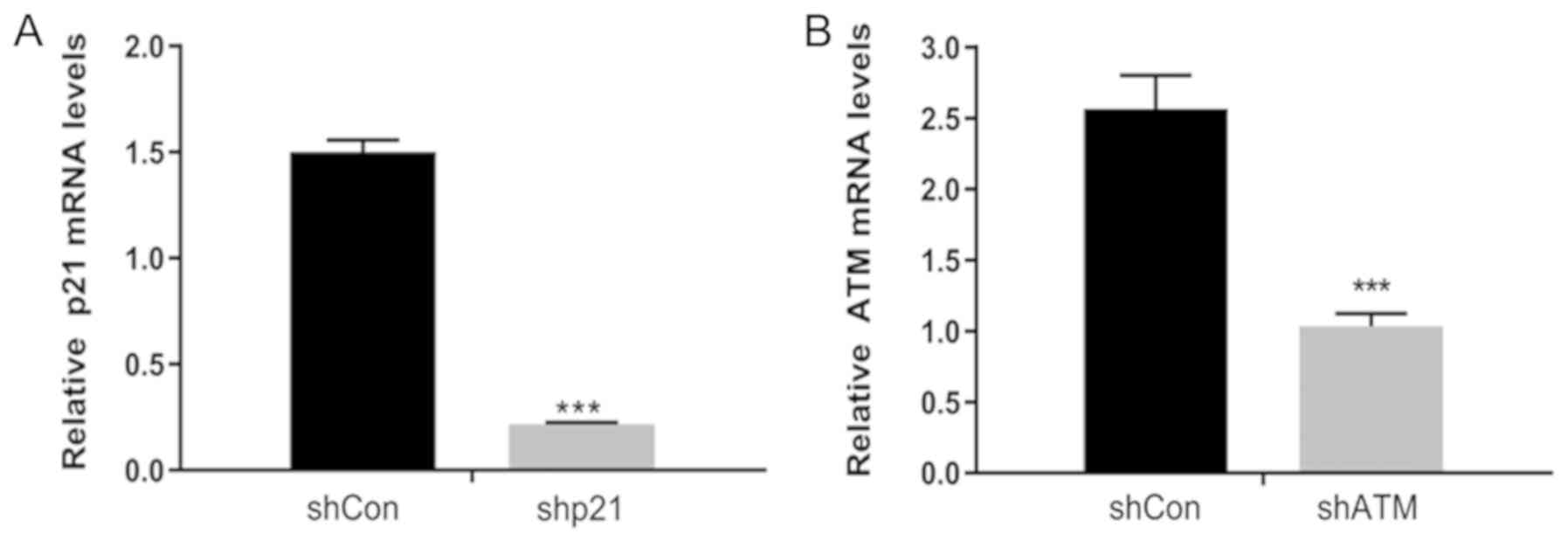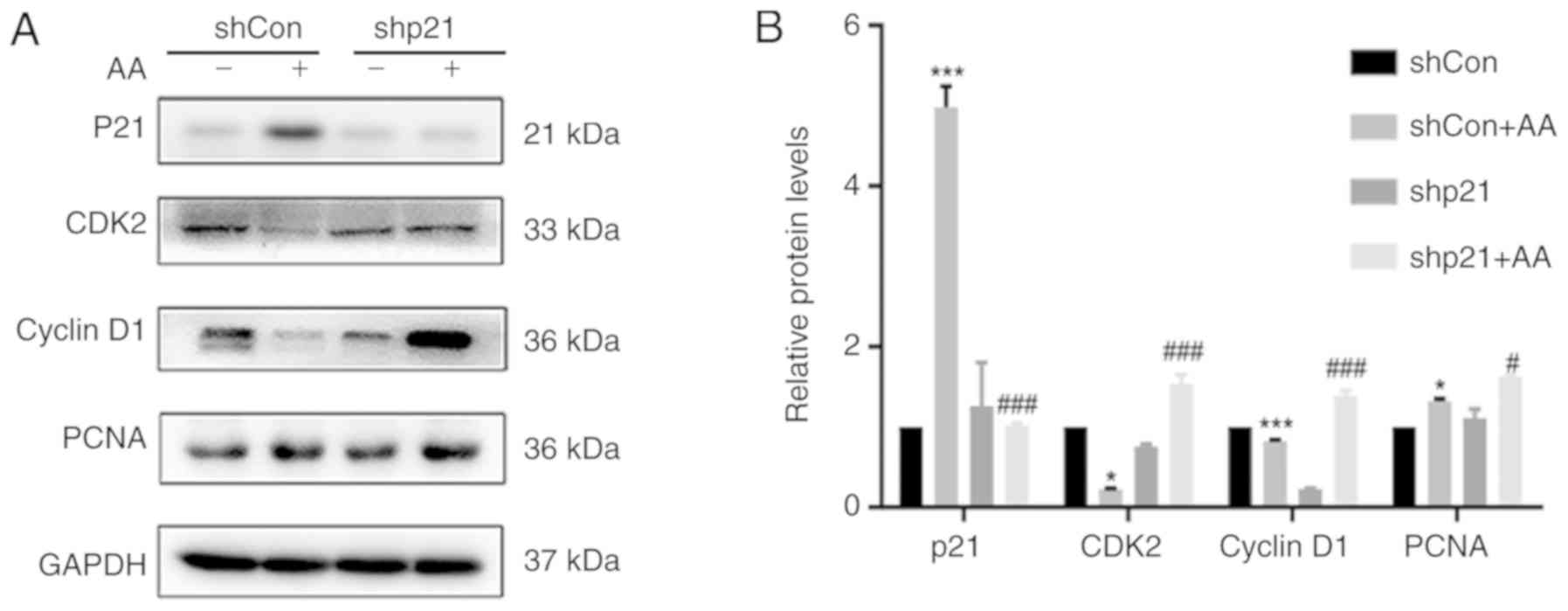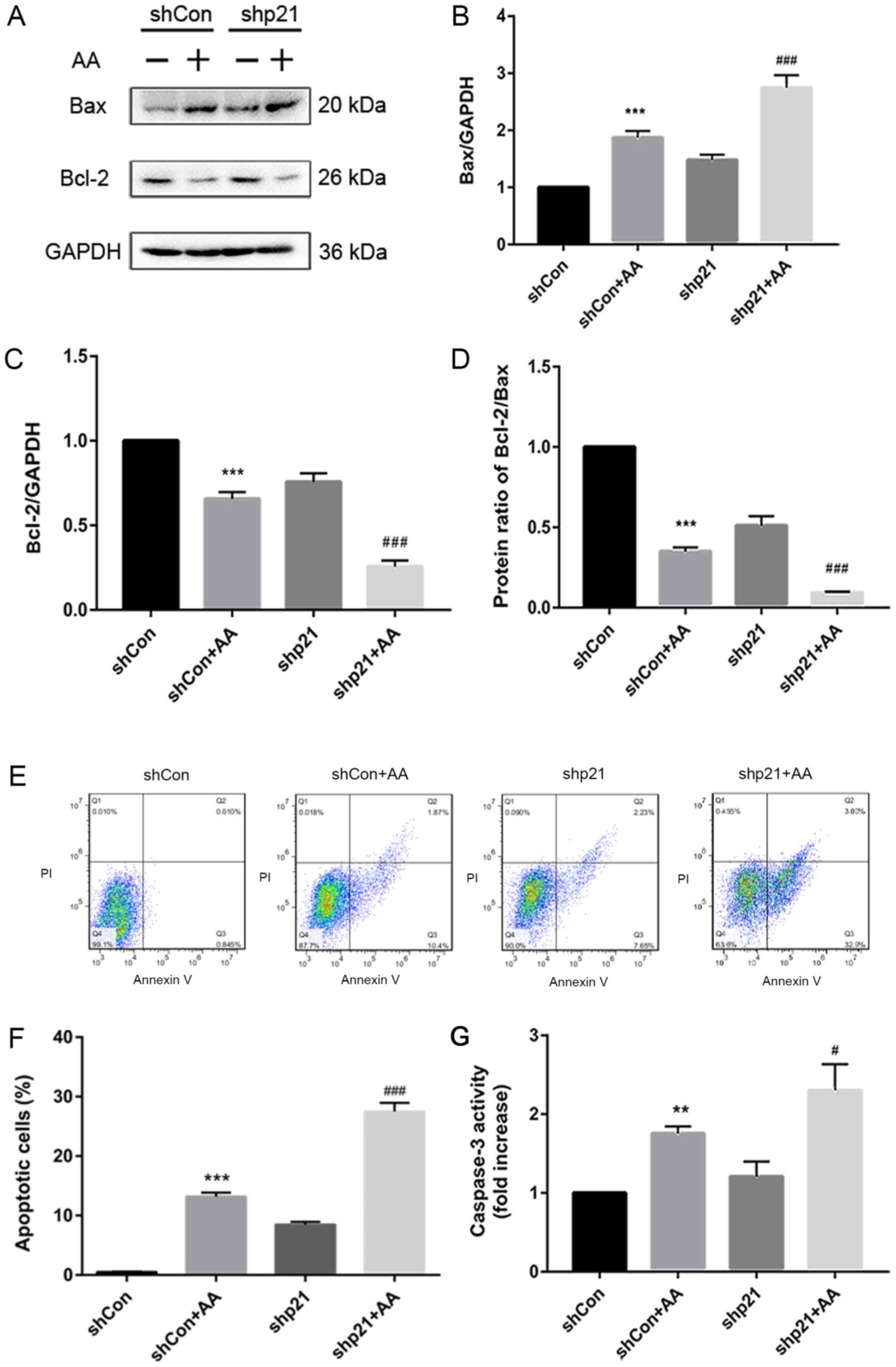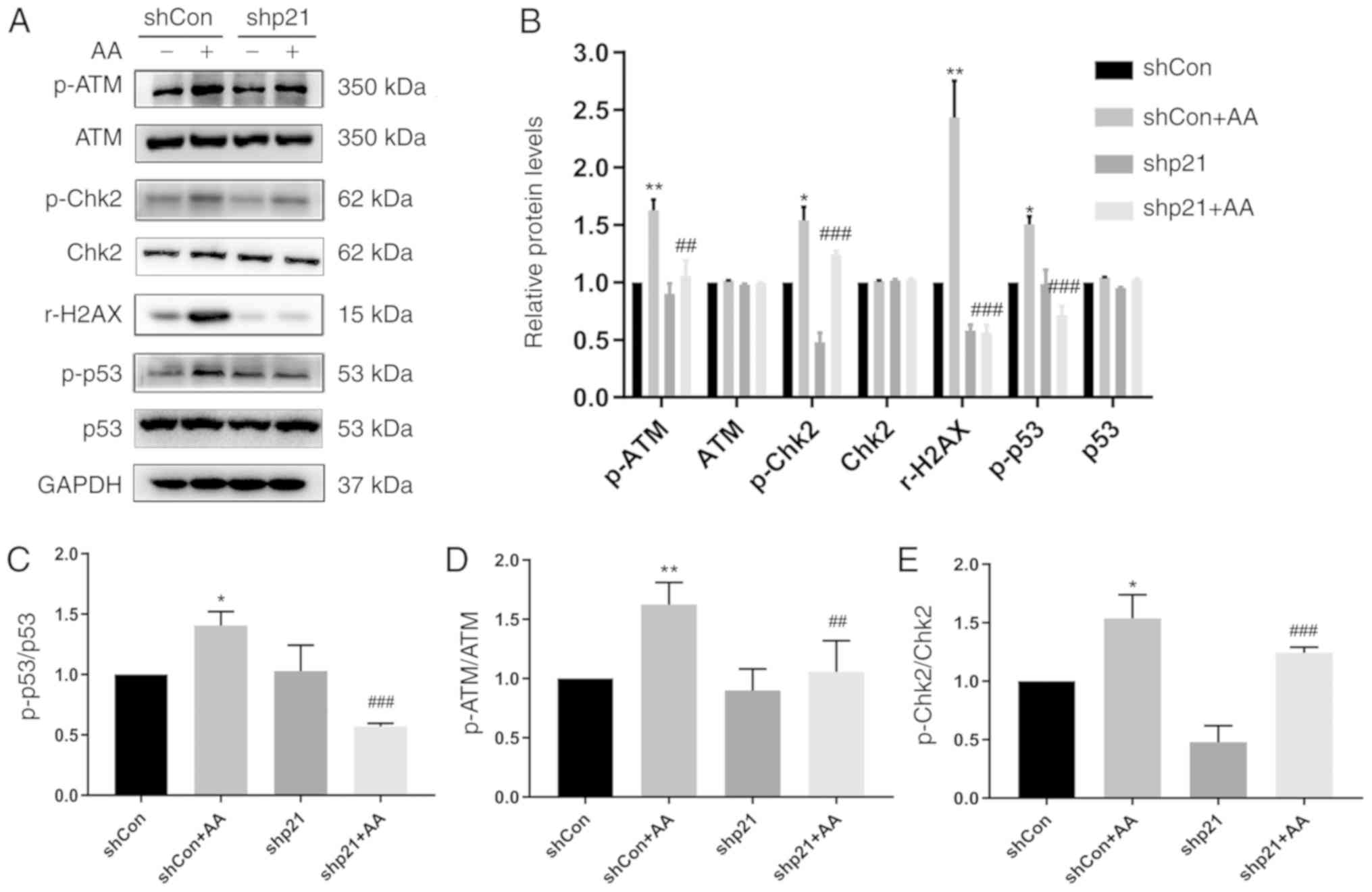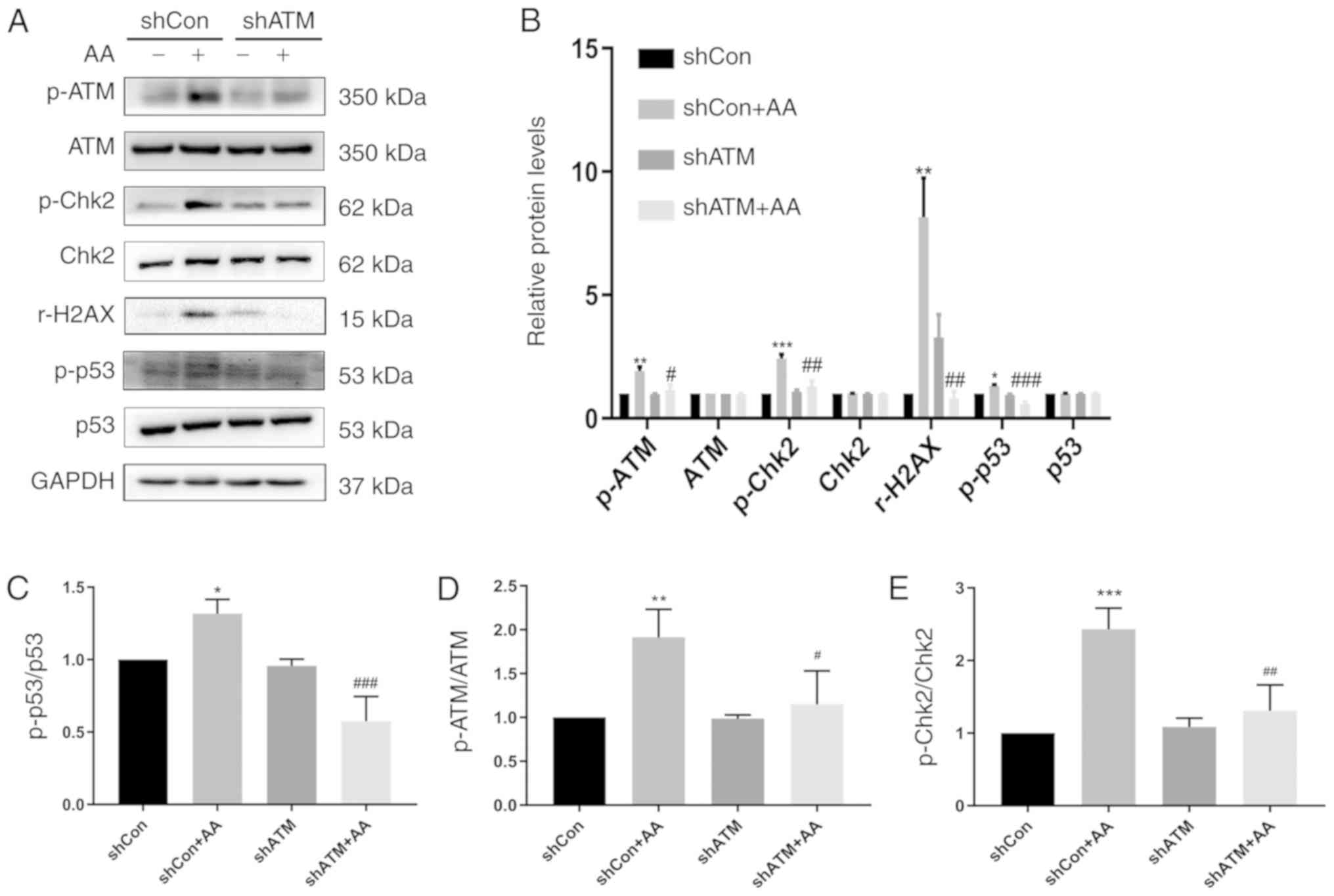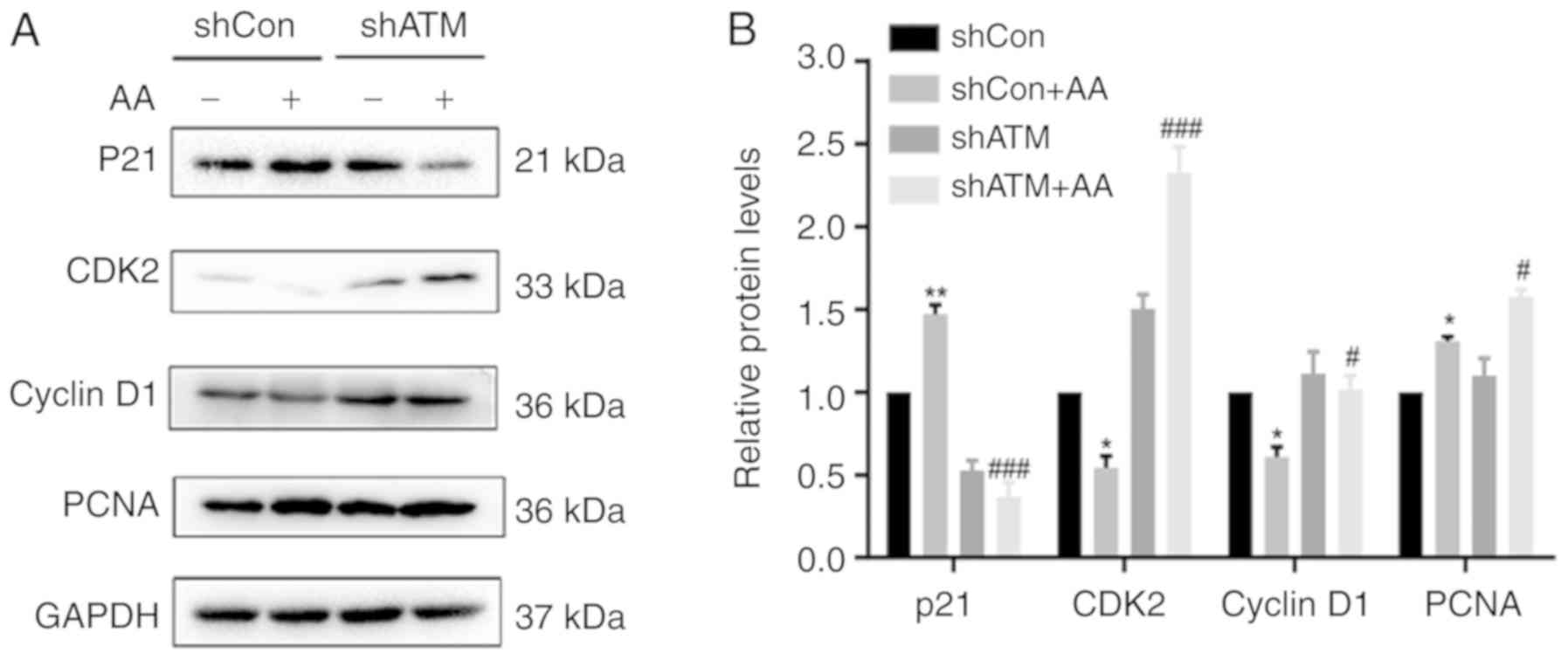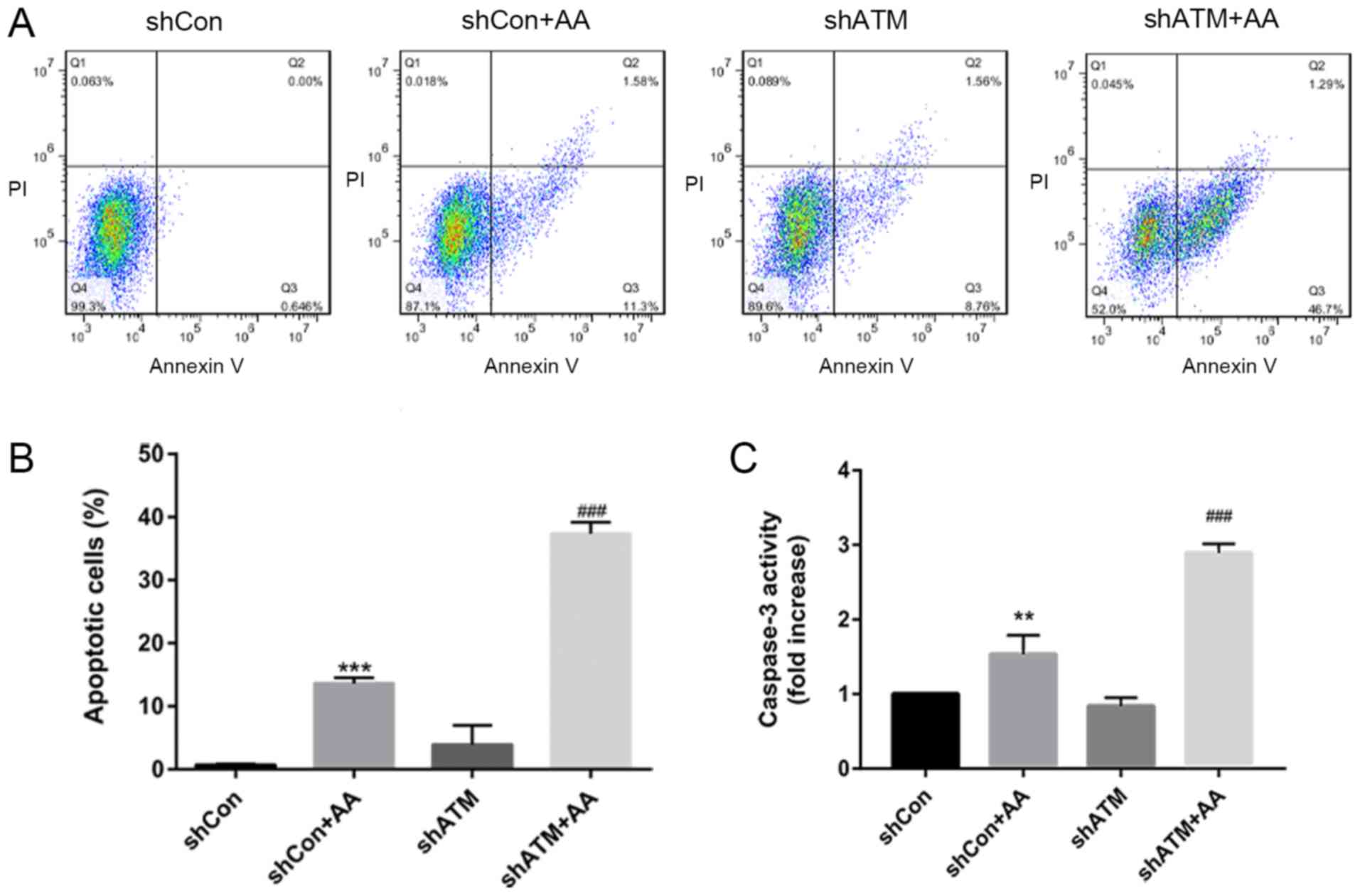|
1
|
GBD 2015 Mortality and Causes of Death
Collaborators, . Global, regional, and national life expectancy,
all-cause mortality, and cause-specific mortality for 249 causes of
death, 1980-2015: A systematic analysis for the Global Burden of
Disease Study 2015. Lancet. 388:1459–1544. 2016. View Article : Google Scholar : PubMed/NCBI
|
|
2
|
Duni A, Liakopoulos V, Roumeliotis S,
Peschos D and Dounousi E: Oxidative stress in the pathogenesis and
evolution of chronic kidney disease: Untangling Ariadne's thread.
Int J Mol Sci. 20:E37112019. View Article : Google Scholar : PubMed/NCBI
|
|
3
|
Smeets B and Moeller MJ: Parietal
epithelial cells and podocytes in glomerular diseases. Semin
Nephrol. 32:357–367. 2012. View Article : Google Scholar : PubMed/NCBI
|
|
4
|
Zeisberg M and Neilson EG: Mechanisms of
tubulointerstitial fibrosis. J Am Soc Nephrol. 21:1819–1834. 2010.
View Article : Google Scholar : PubMed/NCBI
|
|
5
|
Eddy AA: Overview of the cellular and
molecular basis of kidney fibrosis. Kidney Int Suppl. 4:2–8. 2014.
View Article : Google Scholar
|
|
6
|
Falke LL, Gholizadeh S, Goldschmeding R,
Kok RJ and Nguyen TQ: Diverse origins of the
myofibroblast-implications for kidney fibrosis. Nat Rev Nephrol.
11:233–244. 2015. View Article : Google Scholar : PubMed/NCBI
|
|
7
|
Nangaku M: Chronic hypoxia and
tubulointerstitial injury: A final common pathway to end-stage
renal failure. J Am Soc Nephrol. 17:17–25. 2006. View Article : Google Scholar : PubMed/NCBI
|
|
8
|
Wang X, Wang L, Zhu N, Zhou Y, Gu LJ and
Yuan WJ: Hepatitis B virus X protein modulates renal tubular
epithelial cell-induced T-cell and macrophage responses. Immunol
Cell Biol. 94:266–273. 2016. View Article : Google Scholar : PubMed/NCBI
|
|
9
|
Wan J, Zhou X, Cui J, Zou Z, Xu Y and You
D: Role of complement 3 in TNF-α-induced mesenchymal transition of
renal tubular epithelial cells in vitro. Mol Biotechnol. 54:92–100.
2013. View Article : Google Scholar : PubMed/NCBI
|
|
10
|
Chen BC, Bai YH, Tang LL, Wang BQ, Liu B,
Cai Y, Peng X, Yang YR and Zheng SL: The progression of the
tubulointerstitial fibrosis driven by stress-induced
‘proliferation-death’ vicious circle. Med Hypotheses. 82:643–647.
2014. View Article : Google Scholar : PubMed/NCBI
|
|
11
|
Monteiro MB, Ramm S, Chandrasekaran V,
Boswell SA, Weber EJ, Lidberg KA, Kelly EJ and Vaidya VS: A
High-Throughput screen identifies DYRK1A inhibitor ID-8 that
stimulates human kidney tubular epithelial cell proliferation. J Am
Soc Nephrol. 29:2820–2833. 2018. View Article : Google Scholar : PubMed/NCBI
|
|
12
|
Bonventre JV: Primary proximal tubule
injury leads to epithelial cell cycle arrest, fibrosis, vascular
rarefaction, and glomerulosclerosis. Kidney Int Suppl (2011).
4:39–44. 2014. View Article : Google Scholar : PubMed/NCBI
|
|
13
|
Humphreys BD, Valerius MT, Kobayashi A,
Mugford JW, Soeung S, Duffield JS, McMahon AP and Bonventre JV:
Intrinsic epithelial cells repair the kidney after injury. Cell
Stem Cell. 2:284–291. 2008. View Article : Google Scholar : PubMed/NCBI
|
|
14
|
Gniadecki R, Hansen M and Wulf HC: Two
pathways for induction of apoptosis by ultraviolet radiation in
cultured human keratinocytes. J Invest Dermatol. 109:163–169. 1997.
View Article : Google Scholar : PubMed/NCBI
|
|
15
|
Alenzi FQ: Links between apoptosis,
proliferation and the cell cycle. Br J Biomed Sci. 61:99–102. 2004.
View Article : Google Scholar : PubMed/NCBI
|
|
16
|
Pandey S and Wang E: Cells en route to
apoptosis are characterized by the upregulation of c-fos, c-myc,
c-jun, cdc2, and RB phosphorylation, resembling events of early
cell-cycle traverse. J Cell Biochem. 58:135–150. 1995. View Article : Google Scholar : PubMed/NCBI
|
|
17
|
Sanz AB, Sanchez-Niño MD, Izquierdo MC,
Jakubowski A, Justo P, Blanco-Colio LM, Ruiz-Ortega M, Egido J and
Ortiz A: Tweak induces proliferation in renal tubular epithelium: A
role in uninephrectomy induced renal hyperplasia. J Cell Mol Med.
13:3329–3342. 2009. View Article : Google Scholar : PubMed/NCBI
|
|
18
|
Yang L, Besschetnova TY, Brooks CR, Shah
JV and Bonventre JV: Epithelial cell cycle arrest in G2/M mediates
kidney fibrosis after injury. Nat Med. 16:535–543, 1p following
143. 2010. View
Article : Google Scholar : PubMed/NCBI
|
|
19
|
Bozzo C, Tiberio R, Graziola F, Pertusi G,
Valente G, Colombo E, Small PL and Leigheb G: A Mycobacterium
ulcerans toxin, mycolactone, induces apoptosis in primary human
keratinocytes and in HaCaT cells. Microbes Infect. 12:1258–1263.
2010. View Article : Google Scholar : PubMed/NCBI
|
|
20
|
Nam AR, Jin MH, Park JE, Bang JH, Oh DY
and Bang YJ: Therapeutic targeting of the DNA damage response using
an ATR inhibitor in biliary tract cancer. Cancer Res Treat.
51:1167–1179. 2019. View Article : Google Scholar : PubMed/NCBI
|
|
21
|
Lee IH, Kawai Y, Fergusson MM, Rovira II,
Bishop AJ, Motoyama N, Cao L and Finkel T: Atg7 modulates p53
activity to regulate cell cycle and survival during metabolic
stress. Science. 336:225–228. 2012. View Article : Google Scholar : PubMed/NCBI
|
|
22
|
Shiloh Y: ATM and related protein kinases:
Safeguarding genome integrity. Nat Rev Cancer. 3:155–168. 2003.
View Article : Google Scholar : PubMed/NCBI
|
|
23
|
Charen E and Harbord N: Toxicity of herbs,
vitamins, and supplements. Adv Chronic Kidney Dis. 27:67–71. 2020.
View Article : Google Scholar : PubMed/NCBI
|
|
24
|
Lu H, Liang Y, Guan B, Shi Y, Gong Y, Li
J, Kong W, Liu J, Fang D, Liu L, et al: Aristolochic acid
mutational signature defines the low-risk subtype in upper tract
urothelial carcinoma. Theranostics. 10:4323–4333. 2020. View Article : Google Scholar : PubMed/NCBI
|
|
25
|
Livak JK and Schmittgen TD: Analysis of
relative gene expression data using quantitative PCR and the
2(-Delta Delta C(T)) method. Methods. 25:402–408. 2001. View Article : Google Scholar : PubMed/NCBI
|
|
26
|
Wang HW, Chen YH, Chen YY, Huang W, Zhu
XD, Ni FB, Wu GD, Xu ZQ, Huang ZQ, Chen BC and Xiao FY: Islet
transplantation attenuates cardiac fibrosis in diabetic rats
through inhibition of TGF-β1/Smad3 pathway. Am J Transl
Res. 10:2445–2456. 2018.PubMed/NCBI
|
|
27
|
Wu MJ, Wen MC, Chiu YT, Chiou YY, Shu KH
and Tang MJ: Rapamycin attenuates unilateral ureteral
obstruction-induced renal fibrosis. Kidney Int. 69:2029–2036. 2006.
View Article : Google Scholar : PubMed/NCBI
|
|
28
|
Price PM, Safirstein RL and Megyesi J: The
cell cycle and acute kidney injury. Kidney Int. 76:604–613. 2009.
View Article : Google Scholar : PubMed/NCBI
|
|
29
|
Garcia-Fernandez N, Jacobs-Cachá C,
Mora-Gutiérrez JM, Vergara A, Orbe J and Soler MJ: Matrix
metalloproteinases in diabetic kidney disease. J Clin Med.
9:E4722020. View Article : Google Scholar : PubMed/NCBI
|
|
30
|
Srivastava T, Thiagarajan G, Alon US,
Sharma R, El-Meanawy A, McCarthy ET, Savin VJ and Sharma M: Role of
biomechanical forces in hyperfiltration-mediated glomerular injury
in congenital anomalies of the kidney and urinary tract. Nephrol
Dial Transplant. 32:759–765. 2017. View Article : Google Scholar : PubMed/NCBI
|
|
31
|
Manu KA, Cao PHA, Chai TF, Casey PJ and
Wang M: p21cip1/waf1 coordinate autophagy, proliferation and
apoptosis in response to metabolic stress. Cancers (Basel).
11:E11122019. View Article : Google Scholar : PubMed/NCBI
|
|
32
|
Gartel AL and Tyner AL: The role of the
cyclin-dependent kinase inhibitor p21 in apoptosis. Mol Cancer
Ther. 1:639–649. 2002.PubMed/NCBI
|
|
33
|
Xiong Y, Zhang H and Beach D: D type
cyclins associate with multiple protein kinases and the DNA
replication and repair factor PCNA. Cell. 71:505–514. 1992.
View Article : Google Scholar : PubMed/NCBI
|
|
34
|
Tsurimoto T: PCNA binding proteins. Front
Biosci. 4:D849–D858. 1999. View Article : Google Scholar : PubMed/NCBI
|
|
35
|
Warbrick E: The puzzle of PCNA's many
partners. Bioessays. 22:997–1006. 2000. View Article : Google Scholar : PubMed/NCBI
|
|
36
|
Waga S, Hannon GJ, Beach D and Stillman B:
The p21 inhibitor of cyclin-dependent kinases controls DNA
replication by interaction with PCNA. Nature. 369:574–578. 1994.
View Article : Google Scholar : PubMed/NCBI
|
|
37
|
Gibbs E, Kelman Z, Gulbis JM, O'Donnell M,
Kuriyan J, Burgers PM and Hurwitz J: The influence of the
proliferating cell nuclear antigen-interacting domain of p21(CIP1)
on DNA synthesis catalyzed by the human and Saccharomyces
cerevisiae polymerase delta holoenzymes. J Biol Chem.
272:2373–2381. 1997. View Article : Google Scholar : PubMed/NCBI
|
|
38
|
Xu SQ and El-Deiry WS: p21(WAF1/CIP1)
inhibits initiator caspase cleavage by TRAIL death receptor DR4.
Biochem Biophys Res Commun. 269:179–190. 2000. View Article : Google Scholar : PubMed/NCBI
|
|
39
|
Suzuki A, Tsutomi Y, Akahane K, Araki T
and Miura M: Resistance to Fas-mediated apoptosis: Activation of
caspase 3 is regulated by cell cycle regulator p21WAF1 and IAP gene
family ILP. Oncogene. 17:931–939. 1998. View Article : Google Scholar : PubMed/NCBI
|
|
40
|
Steinman RA and Johnson DE: p21WAF1
prevents down-modulation of the apoptotic inhibitor protein c-IAP1
and inhibits leukemic apoptosis. Mol Med. 6:736–749. 2000.
View Article : Google Scholar : PubMed/NCBI
|
|
41
|
Suzuki A, Tsutomi Y, Miura M and Akahane
K: Caspase 3 inactivation to suppress Fas-mediated apoptosis:
Identification of binding domain with p21 and ILP and inactivation
machinery by p21. Oncogene. 18:1239–1244. 1999. View Article : Google Scholar : PubMed/NCBI
|
|
42
|
Yan S, Sorrell M and Berman Z: Functional
interplay between ATM/ATR-mediated DNA damage response and DNA
repair pathways in oxidative stress. Cell Mol Life Sci.
71:3951–3967. 2014. View Article : Google Scholar : PubMed/NCBI
|
|
43
|
Lee HJ, Hwang HI and Jang YJ: Mitotic DNA
damage response: Polo-like kinase-1 is dephosphorylated through
ATM-Chk1 pathway. Cell Cycle. 9:2389–2398. 2010. View Article : Google Scholar : PubMed/NCBI
|
|
44
|
Cook PJ, Ju BG, Telese F, Wang X, Glass CK
and Rosenfeld MG: Tyrosine dephosphorylation of H2AX modulates
apoptosis and survival decisions. Nature. 458:591–596. 2009.
View Article : Google Scholar : PubMed/NCBI
|
|
45
|
Brazina J, Svadlenka J, Macurek L, Andera
L, Hodny Z, Bartek J and Hanzlikova H: DNA damage-induced
regulatory interplay between DAXX, p53, ATM kinase and Wip1
phosphatase. Cell Cycle. 14:375–387. 2015. View Article : Google Scholar : PubMed/NCBI
|
|
46
|
Liu J, Zhang J, Ren L, Wei J, Zhu Y, Duan
J, Jing L, Sun Z and Zhou X: Fine particulate matters induce
apoptosis via the ATM/P53/CDK2 and mitochondria apoptosis pathway
triggered by oxidative stress in rat and GC-2spd cell. Ecotoxicol
Environ Saf. 180:280–287. 2019. View Article : Google Scholar : PubMed/NCBI
|
|
47
|
Ronco C, Martin AR, Demange L and Benhida
R: ATM, ATR, CHK1, CHK2 and WEE1 inhibitors in cancer and cancer
stem cells. Medchemcomm. 8:295–319. 2017. View Article : Google Scholar : PubMed/NCBI
|
|
48
|
Ding H, Xu Y and Jiang N: Upregulation of
miR-101a suppresses chronic renal fibrosis by regulating KDM3A via
blockade of the YAP-TGF-β-Smad signaling pathway. Mol Ther Nucleic
Acids. 19:1276–1289. 2020. View Article : Google Scholar : PubMed/NCBI
|
|
49
|
Li J, Zhang M, Mao Y, Li Y, Zhang X, Peng
X and Yu F: The potential role of aquaporin 1 on aristolochic acid
I induced epithelial mesenchymal transition on HK-2 cells. J Cell
Physiol. 233:4919–4925. 2018. View Article : Google Scholar : PubMed/NCBI
|















